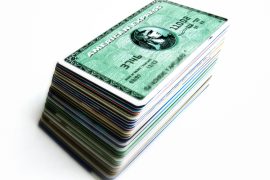I’m late posting today for good reason. I’ve been in New York City since Wednesday, attending the American Society for Journalists and Authors conference. And it’s been a blast! I rode up on the bus with hilarious humor writer, Michele Wojciechowski. I’ve met folks I’ve blogged for (including Debbie Koenig at Parents Need to Eat, Too) and folks who have been featured in Math at Work Monday (like career coach, Kiki Weingarten (and her sister Rachel Weingarten).
I’ve also attended workshops on creating video (look for that soon!) and being fearless in writing (with super mom blogger Jen Singer). Tomorrow, I’ll be moderating a panel called One Plus One Equals Cash: Math for Writers. Yep, I’m bringing the math message to my fellow freelance and book writers.
This little introvert is going to be exhausted by the time I get back to Baltimore on Sunday night. But I’ll also have a ton of inspiration — exactly the kick in the pants I need for the kind of isolated work I do.
Of course conferences mean dinners out with lots of people at one table. And in New York, this almost always means splitting the check ourselves, maybe even after a glass of wine or two! It’s a daunting prospect even for a former math teacher. So here’s a quick look at how you can do it, easily and without worry.
Dividing the Restaurant Check
1. Decide if you’re going to split everything evenly or if people want to pay only for what they purchased. Last night, I ate Indian with a group of friends. We chose to have a variety of dishes and share them family style. At the end of the dinner, we simply split everything seven ways.
2. Add the tip before you divvy things up. The server should receive 15% to 20% for good service on the entire bill. If you figure the tip after the division, you could end up tipping less than the server deserves. And — trust me on this — it makes the math easier.
(Remember how to find the tip? Take 10% of total bill by moving the decimal point one place to the left. For 20%, double that amount. For 15%, take half of that amount and add it to the 10%.)
3. Round. Unless you’re Mr. or Ms. Picky-Pants (and honestly, no one wants to eat dinner with someone like this), rounding is going to be close enough. But here’s the thing. You must round up. Otherwise, you could leave too small a tip or find out you don’t have enough money to cover the whole bill.
This rounding thing goes for both splitting options — dividing the check evenly or adding up each person’s total. But how should you round? Well, that depends on you and your comfort with the mental math. You can round to the nearest dollar (which is usually my preference) or to the nearest 50 cents. Use your best judgement — but pay attention to how your choice may affect others’ totals and the server.
4. Another option is to estimate. Last night our total bill was $156 with the tip. We had seven people, and I immediately noticed something wonderful — $156 is pretty close to $140. Why does that matter? Well, it’s because 7 x 20 = 140. (Okay, so actually I noticed that 7 x 2 = 14, but it’s basically the same math fact.) This meant that each of us would owe something close to $20.
Clearly we each owed more than $20, right? (156 is greater than 140.) So, I estimated that it would be pretty close to $23. Because I was thrilled to figure this out, I pulled out my iPhone and checked. Turns out $156 ÷ 7 = $22.29. My estimation pretty darned good!
5. And of course another option is to use a calculator. I am here to tell you that there is no shame in this! Look at it this way: you have lots of things on your mind, and that glass of wine probably isn’t going to help you do mental math. You’re a grownup, and your fourth-grade teacher isn’t looking over your shoulder telling you that calculators are bad. Use the tools that work for you.
6. Finally, when everyone has contributed, add it all up to make sure there’s enough to cover the bill. Several of us remember last year’s cocktail party when people left early but didn’t leave enough money to cover their drinks. That left the rest of us stuck with more than we expected to pay. Checking your answer is a great way to avoid these costly mistakes and tarnishing your good name!
Of course there are many other ways to approach these everyday — or every conference — problems. You just need to pick the one that works for your special brain. Remember, just because you do it differently doesn’t mean you’re wrong.
But I do encourage you to look at the relationships between numbers — even when you’re using a calculator. You might pick up a few neat tricks. And if you’re my age, it can’t hurt to exercise those brain cells a little.
How do you split the check at a restaurant? Have you ever said, “I’ll treat!” to avoid the math? Share your tricks here and feel free to ask questions, too.







Comments are closed.